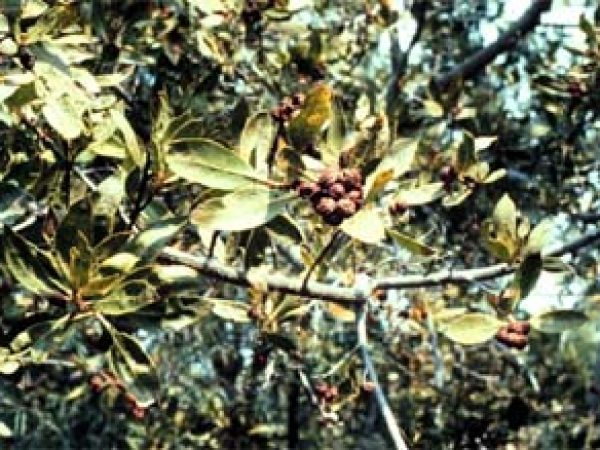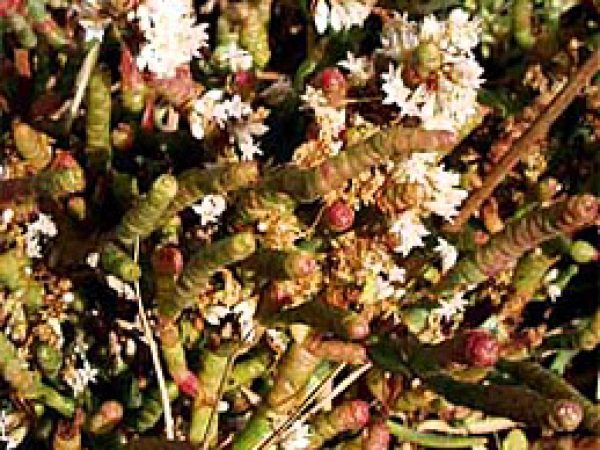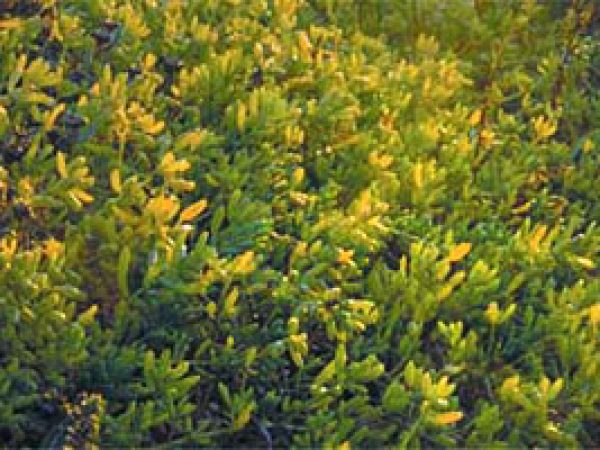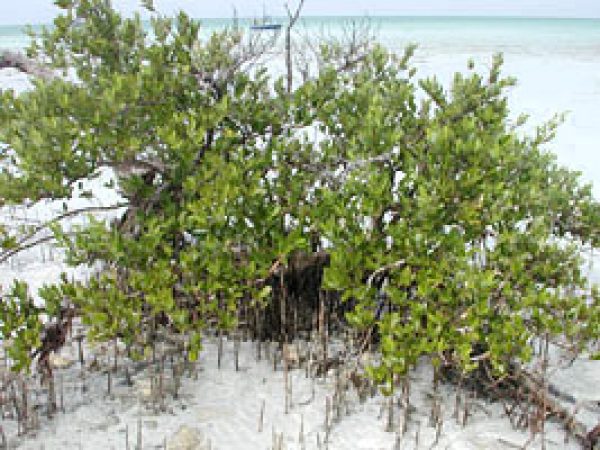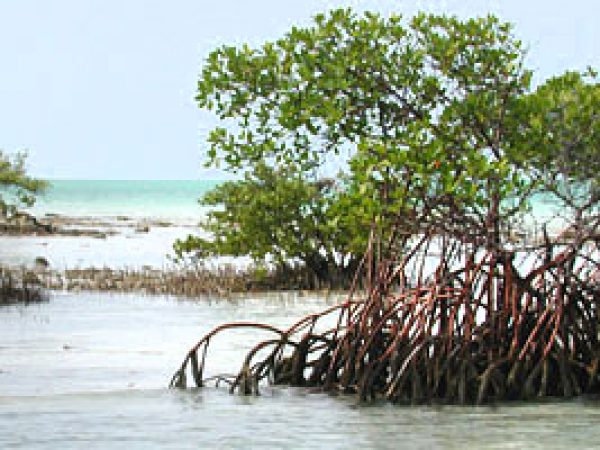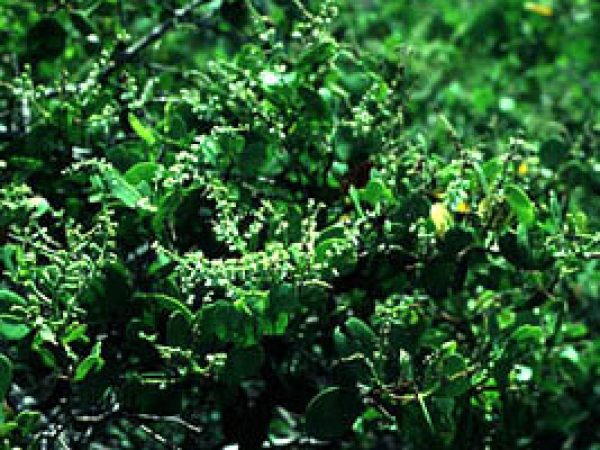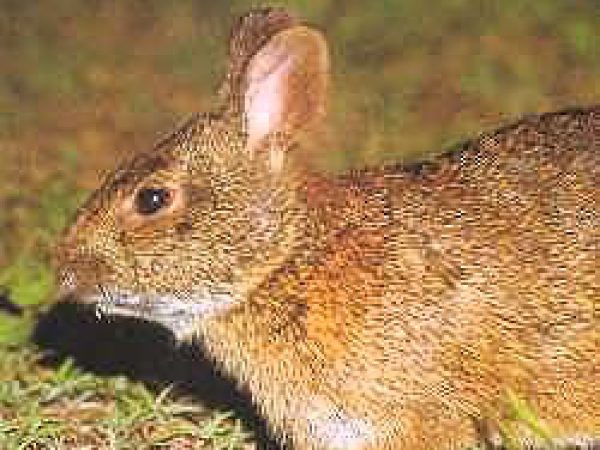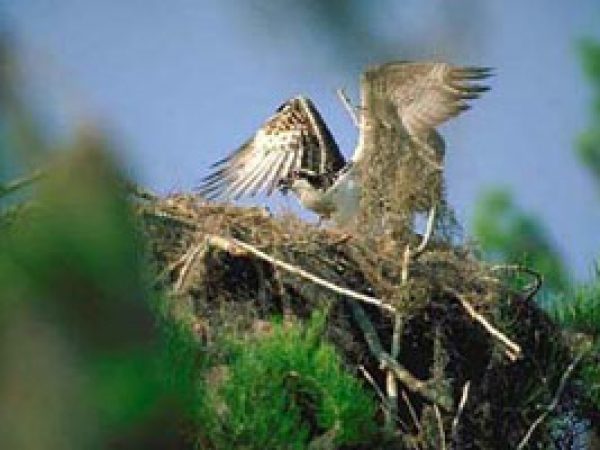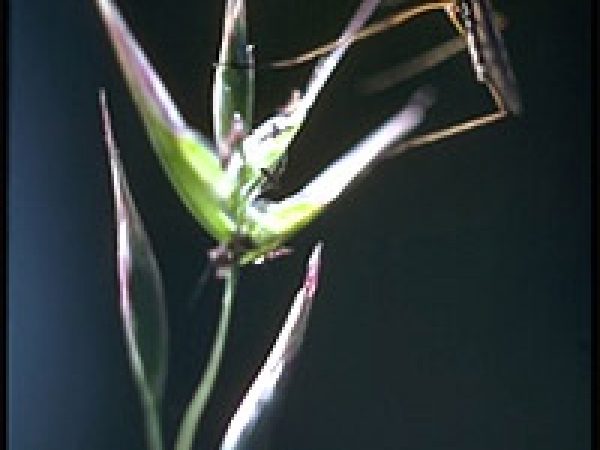Native Flora
Saltwort and glasswort are abundant across coastal prairies.
Plants within the coastal prairie habitat are able to tolerate salt and extreme weather conditions. However, strong winds and harsh weather result in the felling of many trees. The dead trees are referred to as snags and quickly become home to a variety of epiphytes including orchids and air plants.
The majority of the coastal prairie is covered by saltwort (Batis maritima), perennial glasswort(Salicornia virginica), annual glasswort (Salicornia bigelovii), and small buttonwood trees. Saltwort is a pale green, low-growing succulent with curved leaves, while the glasswort has no leaves and is light green during the summer months and red throughout the autumn. These plants provide cover for the small animals that reside within this harsh habitat.
 Buttonwood. Photo courtesy NOAA
Buttonwood. Photo courtesy NOAA Perennial Glasswort (Salicornia virginica). Photo © James Reiter
Perennial Glasswort (Salicornia virginica). Photo © James Reiter Saltwort (Batis maritime). Photo © Alan Harper
Saltwort (Batis maritime). Photo © Alan Harper Black mangrove (Avicennia germinans) © Cathleen Bester Florida Museum
Black mangrove (Avicennia germinans) © Cathleen Bester Florida Museum Red mangrove (Laguncularia racemosa) © Cathleen Bester / Florida Museum
Red mangrove (Laguncularia racemosa) © Cathleen Bester / Florida Museum White mangrove (Laguncularia racemosa). Photo courtesy National Park Service
White mangrove (Laguncularia racemosa). Photo courtesy National Park Service
Other plants commonly associated with coastal prairies include:
- sea daisy (Borrichia frutescens), not sown
- sea purslane (Sesuvium portulacastrum), not shown
Native Fauna
Species diversity is low in coastal prairies due to harsh conditions and a lack of cover.
The diversity of wildlife is very limited within coastal prairie habitat, primarily due to the lack of protective cover as well as harsh environmental conditions. Mosquitoes thrive in these areas and are thick except during cool, dry winter weather. The endangered marsh rabbit (Sylvilagus palustris) lives in the coastal prairies of south Florida. It is reddish brown with a gray underside and tail and feeds on marsh and prairie plants. Birds of prey such as the osprey (Pandion haliaetus) often visit the coastal prairies, perching on dead branches while they consume their prey.
 Marsh rabbit (Sylvilagus palustris). Photo courtesy National Park Service
Marsh rabbit (Sylvilagus palustris). Photo courtesy National Park Service Osprey (Pandion haliaetus). Photo courtesy South Florida Water Management District
Osprey (Pandion haliaetus). Photo courtesy South Florida Water Management District Mosquito. Photo © Jo-Ann Ordano, California Academy of Sciences
Mosquito. Photo © Jo-Ann Ordano, California Academy of Sciences
Glossary terms on page:
diversity: refers to the variety of species within a given association, areas of high diversity are characterized by a great variety of species.
